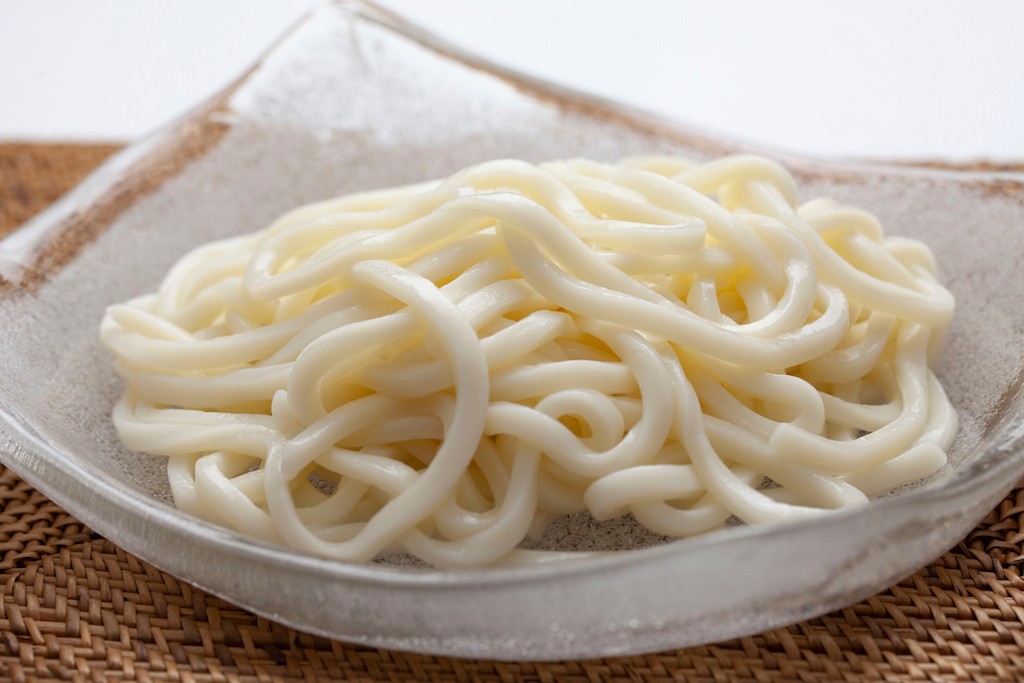Popular Reads
Top Results
Can't find what you're looking for?
View all search resultsPopular Reads
Top Results
Can't find what you're looking for?
View all search resultsMusashino’s forgotten udon heritage
When people think of Japanese udon noodles, Sanuki udon from Kagawa Prefecture or Inaniwa udon from Akita Prefecture often springs to mind.
Change text size
Gift Premium Articles
to Anyone
W
hen people think of Japanese udon noodles, Sanuki udon from Kagawa Prefecture or Inaniwa udon from Akita Prefecture often springs to mind. However, Tokyo also has its own variety called Musashino udon, which is served at a number of restaurants mainly in the Tama area of western Tokyo.
How did udon culture take root in Tokyo, which has a reputation for its soba noodles? To find out, I first visited Kodaira in the Tama area, a city that has united to promote Musashino udon.
The city’s enthusiasm for its noodles is evident in articles dedicated to the dish that appear in local newsletters.
I ordered udon at a restaurant called Nekkozaka that featured in one of the newsletters. The dish took quite a while to arrive — about 15 minutes — but I was eventually greeted with a plate of cold, grayish udon noodles accompanied by a bowl of warm, soy-sauce based dipping sauce and a vegetable side dish.
“We use flour with wheat bran, so our noodles are not pure white like Sanuki udon,” said manager Wataru Ono, 64. The thick noodles take precisely 14 minutes and 30 seconds to cook, he added. One serving is quite filling because the udon is slightly heavier than regular udon and comes with a side dish of vegetables, which the locals call “kate.”
Kodaira is not the only city with restaurants serving Musashino udon. In Masuya in Higashimurayama, udon is boiled using a traditional kamado wood-heated oven rather than a gas or electric stove.
“Certain flavors are impossible to produce unless you use firewood,” said 87-year-old manager Masu Kamiyama, on why he sticks with the traditional cooking method.
What originally linked the Tama area to udon? One clue can be found in the local topography, said Teruo Miyazaki, the head of the Kodaira-based Musashino udon preservation and promotion society.
Most of the Tama area sits on the Musashino plateau, which people once called “Nigemizu no Sato,” or water-mirage land. Settlement on the barren plateau dates back to the Edo period (1603-1867).
People began living there after 1653 when part of the Tamagawa Josui waterway was completed along a 43-kilometer stretch from what is now the city of Hamura, all the way to the current area of Shinjuku Ward.
Even so, it was difficult to draw large quantities of water to farmland because the plateau is higher in altitude than the Arakawa and Tamagawa rivers, which run alongside it.
“Only certain people, like village leaders, were able to have rice fields, which require a lot of water,” Miyazaki said. “Many farmers began cultivating wheat, which will yield harvests with only rainwater for irrigation.”
The difficulty in securing water caused by the geography of the region helped expand wheat production and thereby increased the opportunities for local residents to eat udon. In farming households, udon was served instead of white rice on festive occasions such as wedding banquets.
“There were times when women were told, ‘You cannot get married unless you can make udon,’” said Miyazaki, who comes from a longtime farming family in Kodaira.
Musashino udon is made of wheat flour that is grown on the Musashino plateau. It is said that the name was coined by Yuji Kato, an udon expert and professor emeritus at Kokugakuin University, who died in 2003.
“I guess many people think of soba when they hear about noodles in Tokyo, but Tokyo does have its own regional udon. The name I have given it is ‘Musahino udon,’” Kato wrote in his book “Wagaya wa Udon-shugi!” (My household is “udon-ist”!).
Read also: Six restaurants in Japan that serve halal food
As urban development has expanded in the Tama area, the number of wheat farmers has declined, causing concern among members of the Musashimurayama-based Murayama Udon no Kai civil association.
The group started growing wheat on farmland in the city in an effort to encourage people such as tourists to eat udon made from locally grown produce. Starting next year, they hope to offer udon made from locally harvested and milled wheat throughout the year.
From December 2017 to February this year the Tokyo Federation of Societies of Commerce and Industry and the Tama Tourism Promotion Council held the first stamp rally involving 26 Musashino udon restaurants across seven Tama-area cities, including Higashikurume, Kiyose, Nishitokyo and Higashiyamato. “Some small but famous restaurants were involved. One of Musashino udon’s strong points is that you can discover flavors that match your tastes,” said an official from tourist agency JTB Corp., which planned the event.
As time passes, culinary culture inherited from the Edo period seems to be attracting attention for its potential as a tourism resource.
This article appeared on The Japan News newspaper website, which is a member of Asia News Network and a media partner of The Jakarta Post











